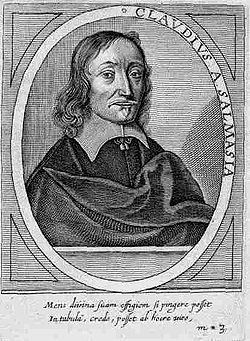
The Palatine Anthology (or Anthologia Palatina), sometimes abbreviated AP, is a manuscript collection of Greek poems and epigrams discovered in 1606 in the Palatine Library in Heidelberg. [1] It is based on the lost collection of Constantine Kephalas of the 10th century, which in turn is based on older anthologies. It contains material from the 7th century BC until 600 AD and later on was the main part of the Greek Anthology which also included the Anthology of Planudes [2] and more material.
Contents
The manuscript of the Palatine Anthology was discovered by Saumaise (Salmasius) in 1606 in the Palatine library at Heidelberg [1] (Codex Palatinus 23). In 1623, during the Thirty Years' War, it was sent with the rest of the Palatine Library to Rome as a present from Maximilian I of Bavaria to Pope Gregory XV and it was kept in the Vatican Library. In 1797 it was taken to Paris by order of the French Directory and in 1816 it was returned to Heidelberg when the war ended, but one (smaller) part of it remained in Paris (Parisinus Suppl. Gr. 384). [3] [4]
